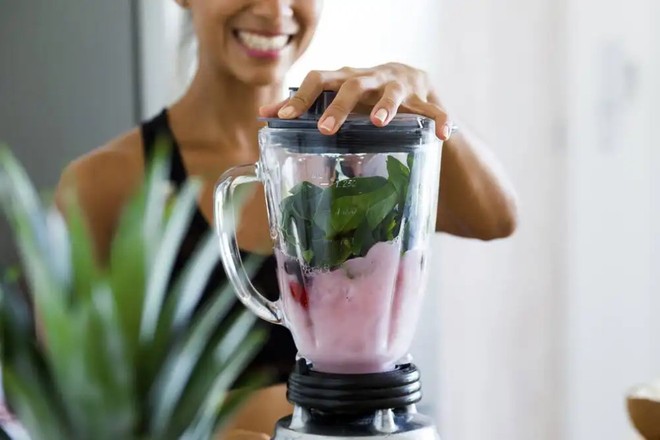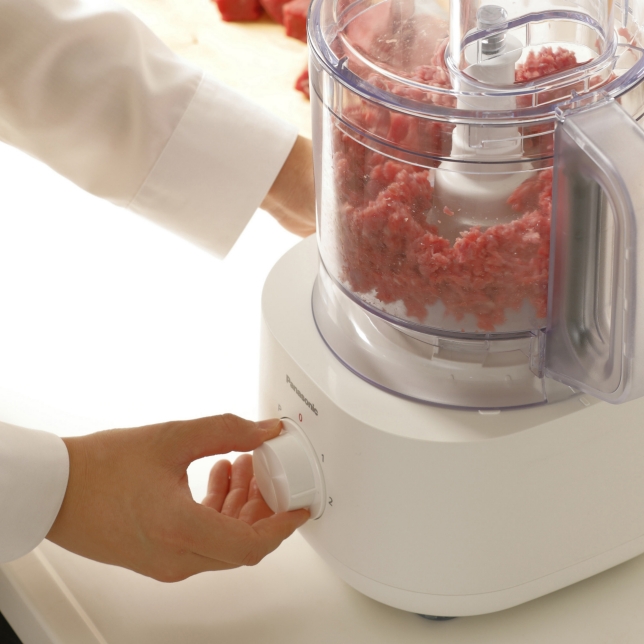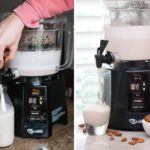Despite both serving the purpose of efficiently breaking down ingredients, blenders and food processors work with slightly different functionality. Here, we break down everything you need to know about blenders vs. food processors so you can determine whether you need one or both appliances.
How Do Blenders Work?
Blenders are electric kitchen appliances consisting of a base, a tall container with a lid that fits on top, and a fixed blade assembly at the bottom of the jar. When the blender is plugged in and turned on, it sends power to a motor inside the unit, which then spins the sharp blades. Activating the blades creates a powerful vortex that pulls ingredients toward them, effectively pulverizing everything.

Blender
What Works Best in a Blender?
Blenders require a certain amount of liquid to operate smoothly, so they are best used for recipes like smoothies, soups, and sauces. Additionally, you can achieve a smoother texture with a blender than a food processor, so if you are looking to create something with a velvety feel, a blender is your best bet. Blenders can also crush ice, though you should avoid putting ice in your food processor regularly as it can dull the blades.
Lastly, because blender jars are often made of glass, you can safely blend hot items like soup in them, something you would not want to do in a plastic food processor. The jars are also typically tall and better suited for pouring.
How Do Food Processors Work?
Food processors consist of a sturdy base and a wide bowl with a removable, sharp blade assembly that can be swapped out for discs or other attachments with various functions, like shredding, mincing, or kneading…
Food processors excel at finely chopping or mincing foods and will give you more even cuts than a blender, due to the way the blades are arranged. Food processors also have a lid with a feed tube, allowing you to easily add ingredients as needed. Like blenders, food processors are electric appliances that simply need to be plugged in and turned on.


Food processor
What Works Best in a Food Processor?
Food processors have a large bowl and blade capacity, allowing them to break down tough ingredients like nuts or stale bread without the help of liquid. You can also use a food processor to mince liquids, but they are not as leak-proof and are more prone to splattering, plus the results will not be as smooth as if you had used a blender. Food processors can also come in handy when preparing doughs with butter, such as pie crust or biscuits… Just be careful not to overwork the dough.
Can a Blender Be Used as a Food Processor?
No, a blender cannot be used as a food processor because it requires a certain amount of liquid to function. Blenders also do not chop or mince with different blades the way food processors can. The two appliances can sometimes be used interchangeably, such as if you’re making certain types of sauces or dips, but generally speaking, no.
So Who Should Use Blenders and Food Processors?
Blenders operate by creating a vortex that pulls ingredients into the blades at the bottom of the jar. This setup works best with liquids, so if you’re a regular smoothie maker, a blender is a must-have. The glass jar can also handle heat, which comes in handy for pureeing hot mixtures like soups.
For quick prep without liquid, a food processor is your best friend, as it’s set up to break down larger, solid ingredients and doesn’t require any liquid to do so.
































